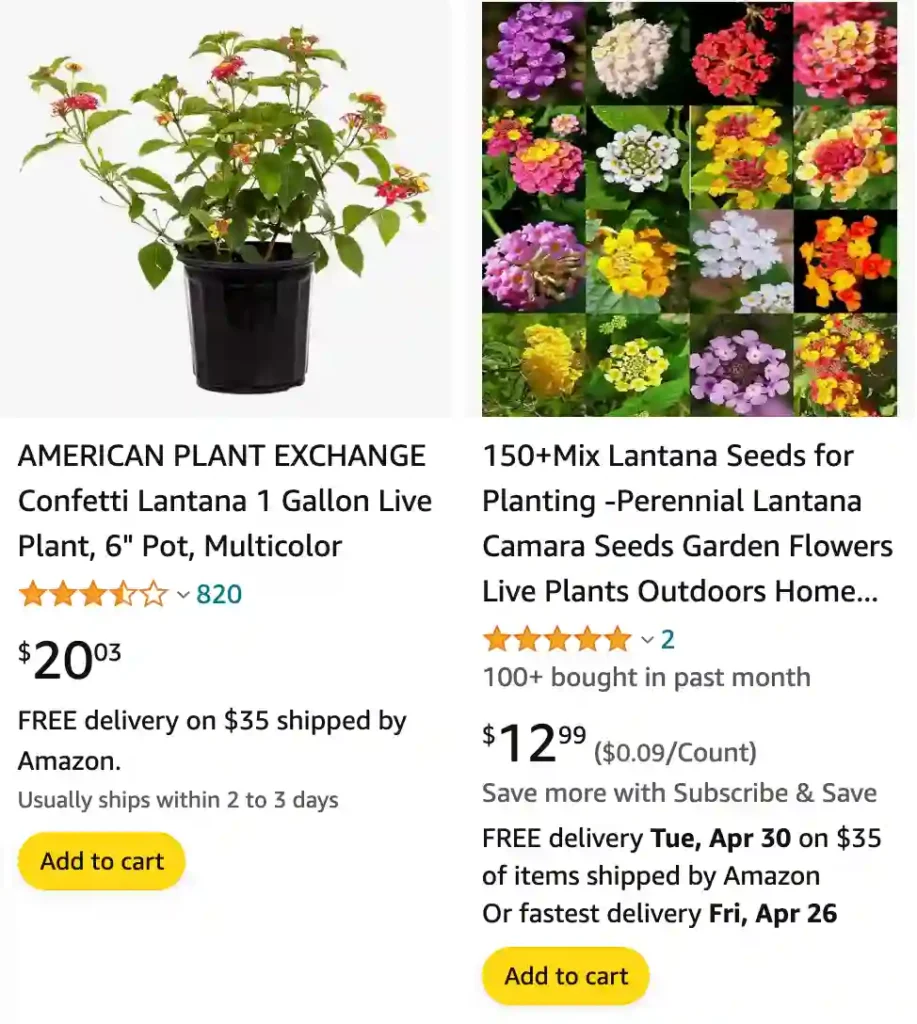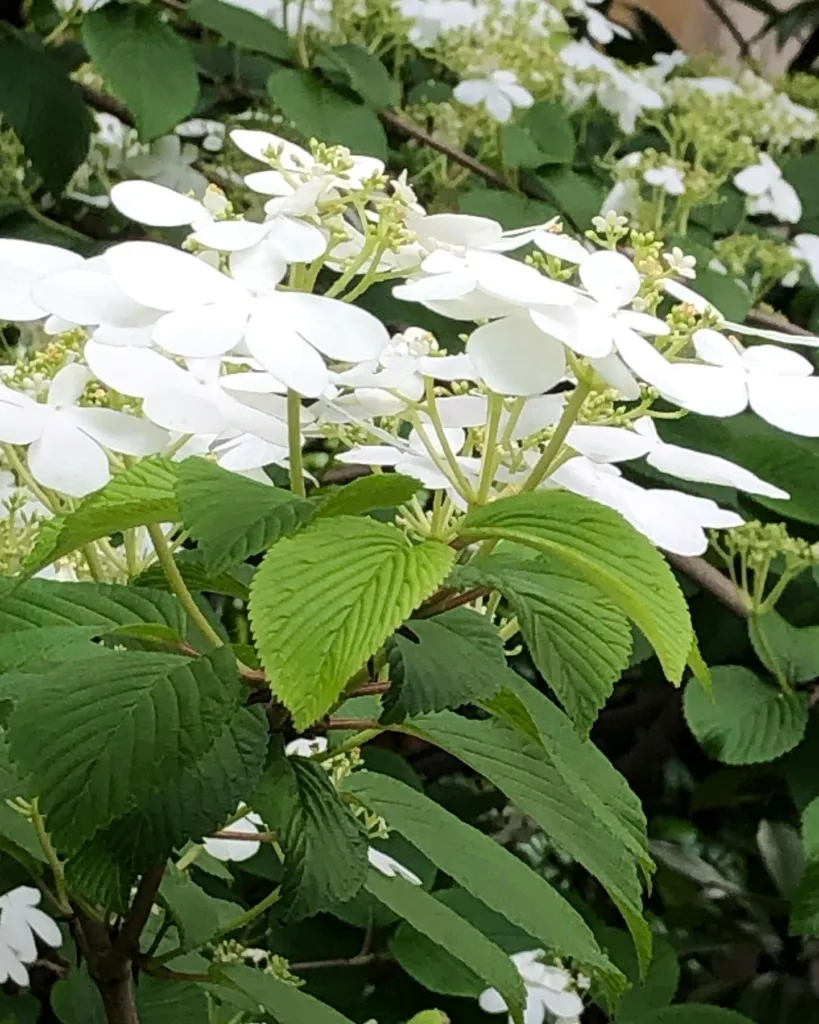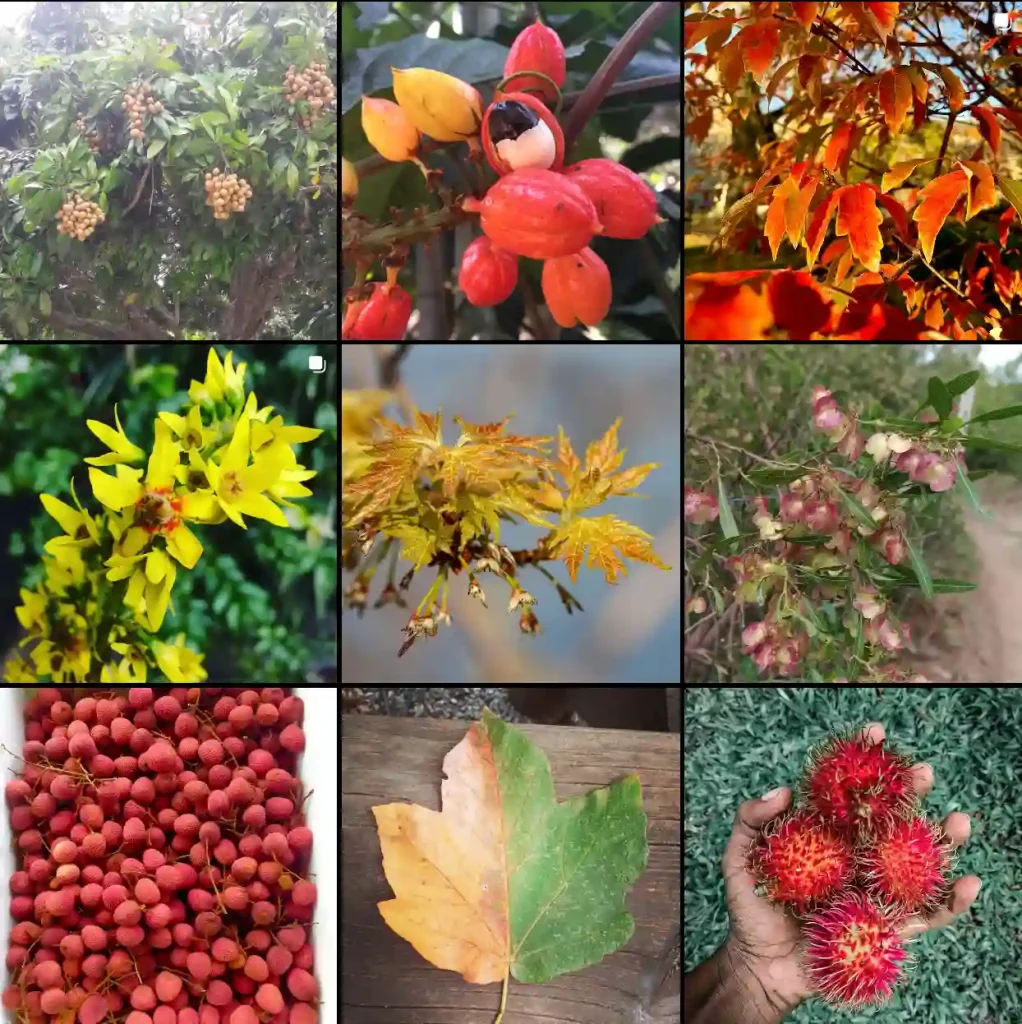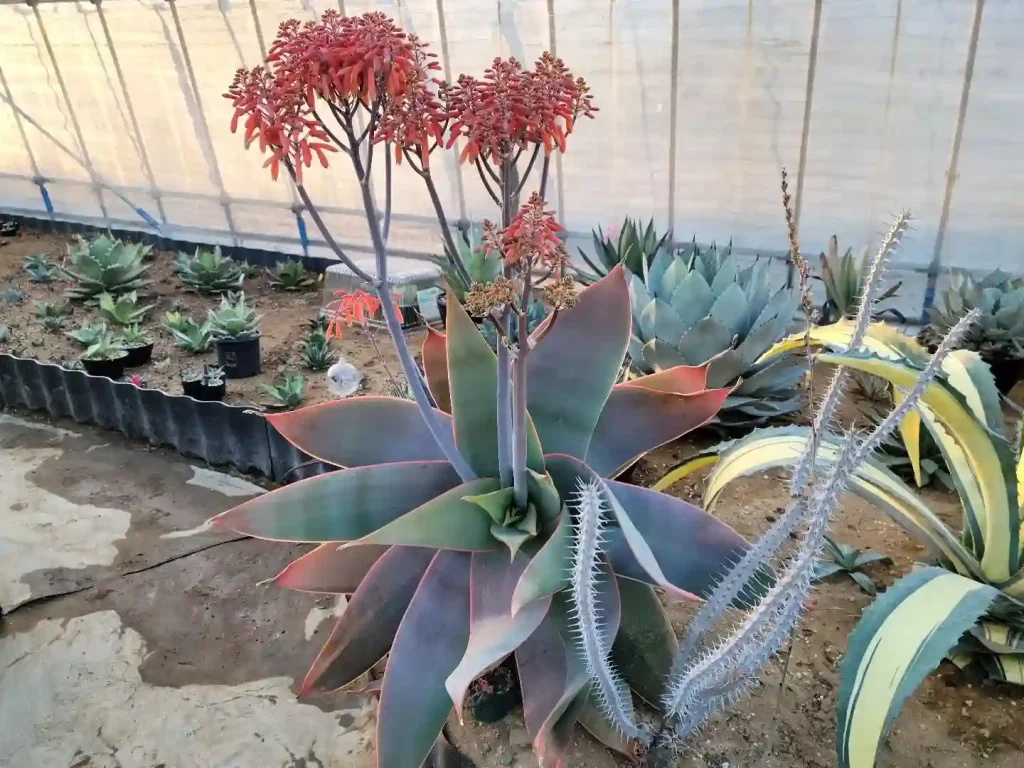
Lantana: A Colorful World of Diverse Shrubs
As a plant enthusiast, I’ve always been fascinated by the sheer variety and adaptability of the Lantana genus from the Verbenaceae family. These vibrant shrubs, with their cheerful clusters of multicolored flowers, bring a touch of the tropics to gardens around the world. But there’s much more to Lantana than just its beauty. From its intriguing botanical features to its complex ecological role, Lantana offers a captivating glimpse into the wonders of the natural world.
Lantana Species
- Lantana achyranthifolia Desf.
- Lantana alainii Moldenke
- Lantana amoena Ridl.
- Lantana angolensis Moldenke
- Lantana angustibracteata Hayek
- Lantana angustifolia Mill.
- Lantana aristeguietae Moldenke
- Lantana × bahamensis Britton
- Lantana balansae Briq.
- Lantana balsamifera Britton
- Lantana boyacana Moldenke
- Lantana buchii Urb.
- Lantana caatingensis Moldenke
- Lantana camara L.
- Lantana canescens Kunth
- Lantana caracasana Turcz.
- Lantana caudata P.H.Cardoso & Salimena
- Lantana chiapasensis Moldenke
- Lantana ciferriana Ekman ex Moldenke
- Lantana coimbrensis S.Moore
- Lantana colombiana López-Pal.
- Lantana cordatibracteata Moldenke
- Lantana cujabensis Schauer
- Lantana demutata Millsp.
- Lantana depressa Small
- Lantana dinteri Moldenke
- Lantana ehrenbergiana Moldenke
- Lantana elenievskii I.E.Méndez
- Lantana × entrerriensis Tronc.
- Lantana exarata Urb. & Ekman
- Lantana ferreyrae Moldenke
- Lantana × flava Medik.
- Lantana × floridana Raf.
- Lantana fucata Lindl.
- Lantana glaziovii Moldenke
- Lantana gracilis T.R.S.Silva
- Lantana grisebachii Stuck. ex Seckt
- Lantana grosseserrata Moldenke
- Lantana hatoensis Moldenke
- Lantana haughtii Moldenke
- Lantana hirsuta M.Martens & Galeotti
- Lantana hirta Graham
- Lantana hodgei R.W.Sanders
- Lantana horrida Kunth
- Lantana humuliformis Verdc.
- Lantana hypoleuca Briq.
- Lantana indica Roxb.
- Lantana insularis Moldenke
- Lantana involucrata L.
- Lantana jaliscana Moldenke
- Lantana jamaicensis Britton
- Lantana kingii Moldenke
- Lantana langlassei Moldenke
- Lantana leonardorum Moldenke
- Lantana leucocarpa Urb. & Ekman ex Moldenke
- Lantana lindmanii Briq.
- Lantana lockhardtii D.Don ex Schauer
- Lantana lopez-palacii Moldenke
- Lantana lucida Schauer
- Lantana lundiana Schauer
- Lantana machadoi R.Fern.
- Lantana magnibracteata Tronc.
- Lantana megapotamica (Spreng.) Tronc.
- Lantana melissiodorifera Perr.
- Lantana micrantha Briq.
- Lantana microcarpa Urb.
- Lantana moldenkei R.Fern.
- Lantana mollis Graham
- Lantana montevidensis (Spreng.) Briq.
- Lantana × multicolor Lem.
- Lantana × mutabilis Weigel
- Lantana nivea Vent.
- Lantana notha Moldenke
- Lantana obtusata Briq.
- Lantana ovatifolia Britton
- Lantana × paraensis (Moldenke) R.W.Sanders
- Lantana pastazensis Moldenke
- Lantana pauciflora Urb.
- Lantana pavonii Moldenke
- Lantana peduncularis Andersson
- Lantana petitiana A.Rich.
- Lantana × planaltensis R.W.Sanders
- Lantana planifolia (Cham.) Briq.
- Lantana × pohliana Schauer
- Lantana × polyacantha Schauer
- Lantana prostrata Larrañaga
- Lantana punctulata Moldenke
- Lantana radula Sw.
- Lantana ramboi (Moldenke) Salimena & Múlgura
- Lantana reineckii Briq.
- Lantana reptans Hayek
- Lantana restingensis Salimena & T.R.S.Silva
- Lantana reticulata Pers.
- Lantana × robusta Schauer
- Lantana × rubra Berland.
- Lantana rugosa Thunb.
- Lantana rugulosa Kunth
- Lantana ruiz-teranii López-Pal. & Steyerm.
- Lantana rusbyana Moldenke
- Lantana salicifolia Kunth
- Lantana salzmannii Schauer
- Lantana sandersii A.R.Franck & Gann
- Lantana santosii Moldenke
- Lantana scabiosiflora Kunth
- Lantana scabrida Aiton
- Lantana soatensis Moldenke
- Lantana speciosa Salimena & T.R.S.Silva
- Lantana splendens Medik.
- Lantana sprucei Hayek
- Lantana × strigocamara R.W.Sanders
- Lantana × strigodepressa A.R.Franck
- Lantana strigosa (Griseb.) Urb.
- Lantana subtracta Hiern
- Lantana svensonii Moldenke
- Lantana swynnertonii Moldenke
- Lantana tilcarensis Tronc.
- Lantana tomasii Moldenke
- Lantana trifolia L.
- Lantana ukambensis (Vatke) Verdc.
- Lantana undulata Schrank
- Lantana urticoides Hayek Plant FAQs: Lantana Urticoides – Texas Lantana
- Lantana velutina M.Martens & Galeotti
- Lantana venosa (Rusby) Liesner & S.Hirth
- Lantana veronicifolia Hayek
- Lantana viburnoides (Forssk.) Vahl
- Lantana viscosa Pohl ex Schauer
- Lantana xenica Moldenke
- Lantana zahlbruckneri Hayek
Do deer eat lantana?
I’m generally pretty lucky with deer; they don’t seem to bother my yard too much. However, I did try planting lantana a couple of years back. Those bright flowers seemed like a perfect addition. Unfortunately, those beautiful blooms were like a deer buffet. They absolutely chomped them down in no time! I learned my lesson – lantana may be gorgeous, but if you have hungry deer around, it’s not worth the risk. I’ve switched to some hardier, deer-resistant plants, and so far, so good!
Is lantana toxic to dogs?
Sadly, yes, lantana is definitely toxic to dogs. This was a hard lesson for me to learn. My golden retriever, Max, has always been a mischievous chewer. One day, I noticed him munching on the colorful flowers of my new lantana plant. At first, I wasn’t too worried, but a quick online search set off alarm bells. Max ended up getting very sick, with vomiting and lethargy. We rushed him to the vet, and thankfully he recovered, but it was a scary experience. Now, I make sure to keep any potentially toxic plants well out of his reach.
How to deadhead lantana?
I actually find deadheading my lantana quite satisfying – it always makes the plant look so much healthier and bushier. I typically wait until the flowers start to fade and look a bit dried out. Then, I just use my fingers and pinch off the whole flower head, right where the flower cluster meets the stem. You can also use small garden shears if you prefer. It’s so simple, yet it really encourages all those gorgeous new blooms to come out, keeping the lantana vibrant and lush!
Do hummingbirds like lantana?
Oh, absolutely! Hummingbirds adore lantana. In fact, it’s one of my main “hummingbird magnet” plants. I love watching those tiny, jewel-like birds flit around the bright clusters of flowers, their wings buzzing like little helicopters. The best part is that lantana blooms for a long time, which means I can enjoy watching the hummingbirds feast for months. Sometimes, I even get lucky enough to see them chase each other off or do their dazzling courtship dives! If you want to invite hummingbirds to your garden, lantana is a must-have.
When to prune lantana?
Here where I live, I like to do a good, hard prune on my lantana in late winter or very early spring, just as new growth starts to appear. Those old, woody stems can get pretty unruly, and a serious chop back helps the plant stay bushy and full. It also really encourages a ton of fresh blooms! Of course, I also do some light pruning throughout the growing season if things start looking a bit scraggly, just to keep it neat. That way, my lantana always looks its best.
Do rabbits eat lantana?
Honestly, my experience with rabbits and lantana has been mixed. I’ve read that the pungent smell of the leaves deters rabbits, and sometimes that has proven true in my garden. However, I’ve also had years where the rabbits seemed completely unbothered by the scent and munched away on the flowers like they were candy! It seems to depend on how hungry they are – if there’s not much else around, chances are the lantana might be on the menu. So, in my opinion, it’s definitely not completely rabbit-proof.
When to trim lantana?
I tend to trim my lantana on two occasions. First, the big prune: I do this in late winter or very early spring, before the main growing season really kicks in. This is when I cut it back quite hard, removing all the old and woody growth. It helps promote lots of new, bushy growth and tons of flowers! Then, throughout the summer and fall, I give it lighter trims just to keep it looking its best. I’ll remove dead blooms, shape straggly bits, and just encourage it to keep looking healthy and vibrant.
What do lantana seeds look like?
Lantana seeds start out as small, green berries that form after the flowers fade. As they mature, the berries turn a deep, purplish-black color. This is when they’re ready to harvest. The seeds themselves are inside those berries.
Here’s a visual breakdown:
- Green Lantana Berries:These aren’t ripe yet, so they don’t contain mature seeds.
- Ripe Lantana Berries:These are ready! The dark color means the seeds inside are fully developed.
- Lantana Seeds:Small, hard, and dark in color. You’ll need to crush the berries to get the seeds out.
Why is my lantana not blooming?
Ugh, I know that frustration! There was a summer my lantana just refused to flower properly. Turns out, the problem was two-fold. First, it wasn’t getting enough sunlight. I’d planted it in a spot that seemed sunny enough, but some nearby shrubs grew in and started shading it too much. Secondly, I think I was overdoing it with the fertilizer. In my eagerness to have big, beautiful blooms, I was feeding it a bit too often. Once I trimmed back the shrubs and cut back on the fertilizer, my lantana perked right up and finally started blooming like crazy!
Are lantana berries edible?
Unfortunately, lantana berries can be quite dangerous, especially when they’re not fully ripe. The green, unripe berries are the most toxic part. I know they can look tempting, but it’s definitely not worth the risk. I learned this lesson the hard way when I was a kid – I had a nasty stomach ache after trying a couple of those berries! While there are claims that the fully ripe, black berries might be edible in small amounts, I honestly still avoid them entirely. There are so many other tasty wild berries around – better safe than sorry!
Does lantana attract butterflies?
Absolutely! Lantana is like a butterfly magnet in my garden. I love watching all the different species fluttering around – monarchs, swallowtails, painted ladies… the vibrant colors and sweet nectar really draw them in. Sometimes I’ll have a whole cloud of butterflies swirling around my lantana bushes! It’s honestly one of the main reasons I plant it every year. There’s just nothing quite like seeing beautiful butterflies enjoying the blooms you’ve grown.
How to collect lantana seeds?
Collecting lantana seeds is fairly easy and kind of fun! Here’s how I do it:
- Wait for the Ripe Berries: Look for the clusters of berries that have turned a very deep purple, almost black color. These will have the mature seeds inside. Avoid the green berries, as they’re not ready yet.
- Harvest the Berries: I usually just gently pluck the berry clusters from the plant. You can use small scissors if you prefer.
- Crush & Clean: To get to the seeds themselves, I crush the ripe berries. You can use your fingers or a spoon – just be careful of the juice, which can stain. Then, give the seeds a good rinse in water to get rid of the berry pulp.
- Dry Thoroughly: Spread the cleaned seeds on a paper towel and let them air dry completely for a day or two. This is really important to prevent mold during storage.
- Store: Once dry, I store my lantana seeds in a small paper envelope or airtight jar in a cool, dark place.
Can lantana grow in pots?
Absolutely! Lantana thrives in pots. I actually have several big containers filled with lantana on my patio. They spill over with vibrant blooms all summer long. The key is choosing a well-draining pot – lantana hates having soggy roots. I also tend to go with a slightly larger pot than I might normally choose, since lantana likes to spread out a bit. With sunshine, regular watering, and occasional fertilizing, a potted lantana will give you an explosion of color that lasts for months!
Does lantana attract bees?
Yes, bees definitely love lantana! The bright nectar-rich blooms are a huge draw for them. I always notice lots of buzzing activity around my lantana bushes, especially during the peak flowering season. I see all sorts – honey bees, bumblebees, and even some smaller native bees enjoying the feast. It makes me happy to know that planting lantana is not only beautiful for my garden but also supports pollinators like bees.
Will lantana grow in shade?
While lantana can tolerate a bit of shade, it won’t thrive like it does in full sun. I tried this experiment myself – planting a lantana in a partially shaded corner to brighten it up. The plant did grow, and it even had a few blooms, but they were nowhere near as vibrant or abundant as when I plant lantana in full sunshine. It also had a scragglier, less bushy appearance. Lantana is really one of those sun-loving plants; give it plenty of sunbeams, and it will reward you with an absolute explosion of color.
Are lantana poisonous to cats?
Yes, unfortunately, lantana is considered toxic to cats. All parts of the plant contain compounds that can cause problems for our feline friends, especially the leaves and unripe berries. If a cat ingests lantana, they might experience symptoms like vomiting, diarrhea, lethargy, and even liver damage in severe cases. I always make sure to keep any lantana plants well out of the reach of my curious cats. It’s better to be safe and plant cat-friendly alternatives instead.
Can i plant lantana in the fall?
Whether or not you can plant lantana in the fall depends on where you live. Here’s why:
- Warm Climates: If you’re lucky enough to live in a frost-free zone, planting lantana in the fall is actually a great option. It can give the plants a chance to establish a strong root system before the hotter summer months arrive.
- Cooler Climates: In areas with cold winters, it’s best to plant lantana in the spring. This gives the plant the entire warm season to get strong before the temperatures drop. If you plant too late in the fall, a young lantana might not survive the first frost.
So, the best time to plant really depends on your local climate!
Can i overwinter lantana indoors? How cold can lantana tolerate?
Absolutely, you can overwinter lantana indoors! This is especially great if you live in zones where it won’t survive the winter outdoors. Lantana isn’t a big fan of frost and generally won’t tolerate prolonged temperatures below freezing.
Here’s how to overwinter lantana:
- Bring it In: Before the first frost, trim back your lantana and bring the pot inside.
- Cool & Semi-Dormant: Find a cool location like a garage or unheated sunroom where temperatures stay around 50-55°F (10-13°C). Give it some occasional light.
- Minimal Watering: Drastically reduce watering during dormancy – just enough to keep the soil from drying out completely.
- Wake It Up In Spring: When spring arrives, gradually introduce your lantana to more light and warmth. You can start fertilizing again and prune the plant for a bushy shape.
Remember, the plant won’t bloom as much indoors, but it’s a great way to keep your favorite lantana alive for the next season!
How to propagate lantana cuttings in water?
Propagating lantana in water is super easy and a great way to get more of these lovely plants. Here’s how I do it:
- Choose Healthy Cuttings: Look for young, green stems without flowers. Cut a section about 4-6 inches long, just below a leaf node (that’s where new roots form most easily).
- Trim the Leaves: Remove the bottom few sets of leaves. Leaving a few leaves at the top helps with photosynthesis.
- Optional Step: Some people like to gently scrape or wound the bottom inch of the stem to encourage rooting. I don’t always find this necessary, but it can help!
- Place in Water: Use a clear glass or jar and fill it with fresh water. Submerge the bottom half of the cutting, making sure the leaves don’t touch the water.
- Light & Warmth: Put your jar in a bright spot but out of direct sunlight to avoid overheating. A bit of warmth also helps.
- Change Water Regularly: Replace the water every few days to keep it fresh and prevent rot.
- Watch for Roots! Within a couple of weeks, you should see little white roots forming at the nodes. Once the roots are a good inch or two long, you can pot your new lantana cutting!
When to plant lantana in Texas?
In Texas, the ideal time to plant lantana is in the spring, after the threat of the last frost has passed. This varies depending on your specific location within Texas:
- Warmer parts of Texas (South and Coastal): You might be able to plant as early as March or April.
- Cooler parts of Texas (North and Panhandle): It’s safer to wait until May or even early June to be sure temperatures stay consistently warm.
Lantana absolutely loves the Texas heat, so planting in spring means it’ll have the whole summer to get settled in and start blooming its heart out!
If i die, water my plants!



